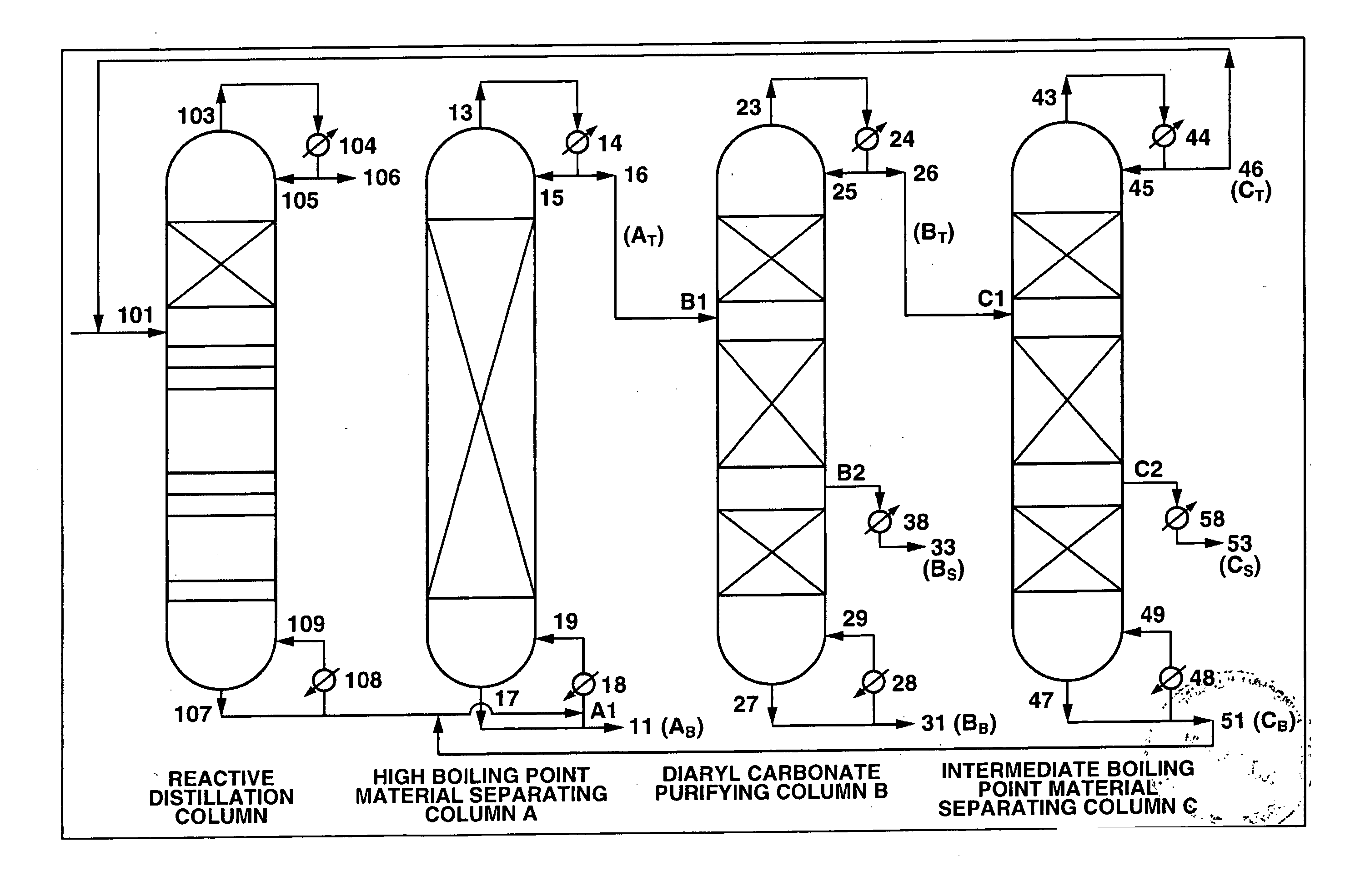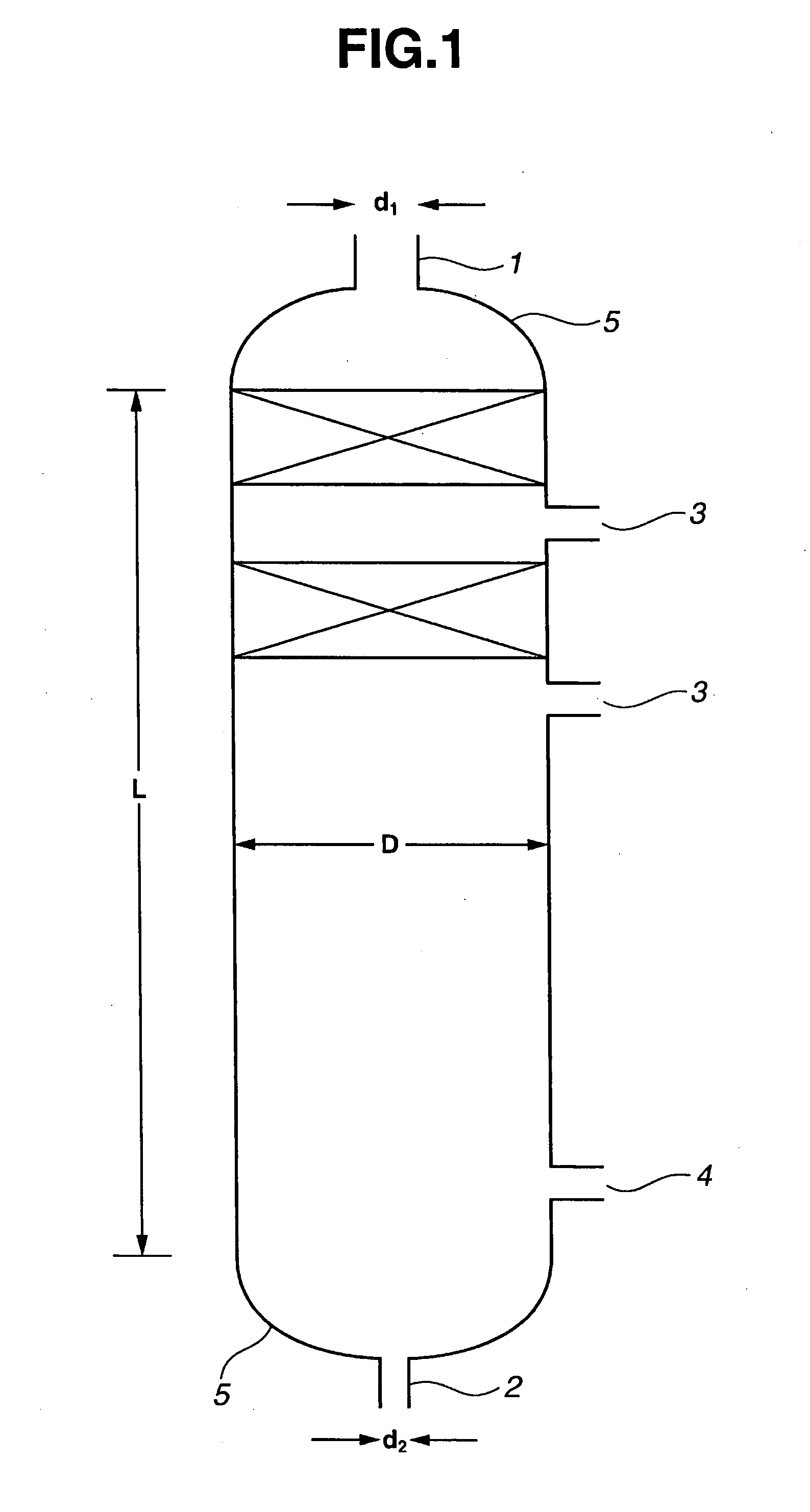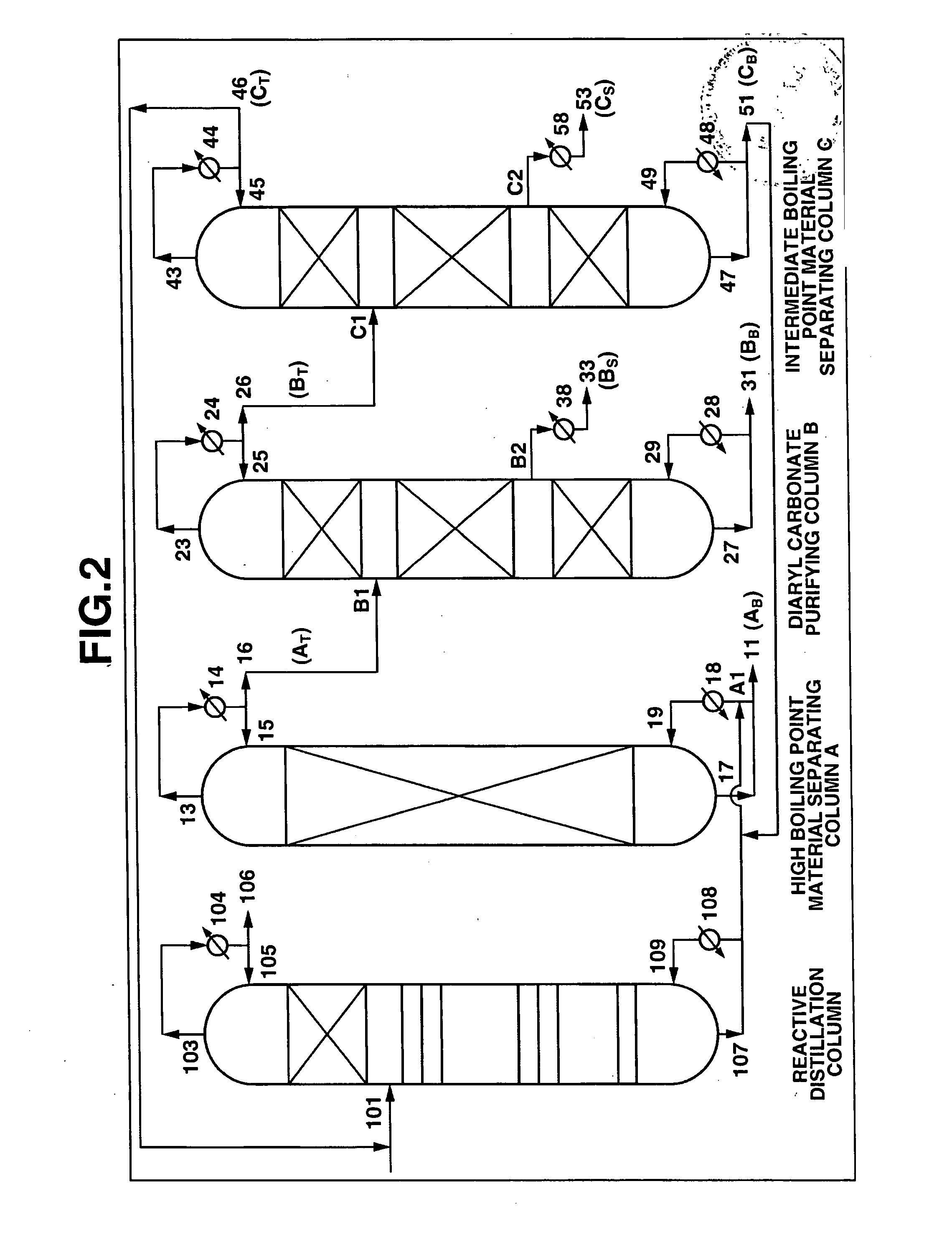Industrial Process for Production of High-Purity Diaryl Carbonate
- Summary
- Abstract
- Description
- Claims
- Application Information
AI Technical Summary
Benefits of technology
Problems solved by technology
Method used
Image
Examples
example 1
[0169] A continuous multi-stage distillation column as shown in FIG. 1 having L=3100 cm, D=500 cm, L / D=6.2, n=30, D / d1=3.85, and D / d2=11.1 was used. In this example, as an internal, two sets of Mellapak (total number of stages 11) were installed in the upper portion, and sieve trays each having the cross-sectional area per hole of approximately 1.3 cm2 and a number of holes of approximately 250 / m2 were used in the lower portion.
[0170] A continuous multi-stage distillation column as shown in FIG. 2 having LA=1700 cm and DA=340 cm, and having Mellapak with nA=30 installed therein as the internal was used as the separating column A.
[0171] A continuous multi-stage distillation column as shown in FIG. 2 having LB=2200 cm and DB=280 cm, and having three sets of Mellapak with n1=12, n2=18, and n3=5 installed therein as the internal was used as the purifying column B.
[0172] A continuous multi-stage distillation column as shown in FIG. 2 having LC=1500 cm and DC=150 cm, and having three s...
example 2
[0183] Reactive distillation and separation / purification by distillation were carried out using the same process as in Example 1, except that the conditions for the separation / purification by distillation were changed to a column bottom temperature of 210° C., a column top pressure of 3800 Pa, and a reflux ratio of 0.61 for the high boiling point material separating column A, a column bottom temperature of 220° C., a column top pressure of 6700 Pa, and a reflux ratio of 1.5 for the diaryl carbonate purifying column B, and a column bottom temperature of 200° C., a column top pressure of 2400 Pa, and a reflux ratio of 0.35 for the intermediate boiling point material separating column C. The purity of the diphenyl carbonate after 500 hours and 1000 hours was at least 99.999% by weight, and each of intermediate boiling point by-products and high boiling point by-products were undetectable, the content thereof being not more than 1 ppm. Moreover, the halogen content of the diphenyl carbo...
example 3
[0184] Using the diphenyl carbonate obtained in Example 1, an aromatic polycarbonate was produced using the process described in example 1 in International Publication No. 99 / 64492. The obtained aromatic polycarbonate having the number average molecular weight of 10500 was injection molded at 310° C. into a test piece (3.2 mm thickness). This test piece had b* value of 3.2 (this value indicating a yellowness in accordance with a CIELAB method) and no yellow tinge, and was uncolored, which was excellent in transparency. After crushing these test pieces by a crushing machine, injection molding of the crushed pieces at 310° C. was repeated five times, whereupon the b* value of the test piece thus obtained was 3.5, and hence marked discoloration was not observed. Moreover, a heat resistance ageing test (120° C., 500 hours) was carried out on the test piece (b* value=3.2) produced by injection molding the above aromatic polycarbonate, whereupon the b* value was 3.5, and hence marked disc...
PUM
| Property | Measurement | Unit |
|---|---|---|
| Temperature | aaaaa | aaaaa |
| Temperature | aaaaa | aaaaa |
| Fraction | aaaaa | aaaaa |
Abstract
Description
Claims
Application Information
 Login to View More
Login to View More - Generate Ideas
- Intellectual Property
- Life Sciences
- Materials
- Tech Scout
- Unparalleled Data Quality
- Higher Quality Content
- 60% Fewer Hallucinations
Browse by: Latest US Patents, China's latest patents, Technical Efficacy Thesaurus, Application Domain, Technology Topic, Popular Technical Reports.
© 2025 PatSnap. All rights reserved.Legal|Privacy policy|Modern Slavery Act Transparency Statement|Sitemap|About US| Contact US: help@patsnap.com



